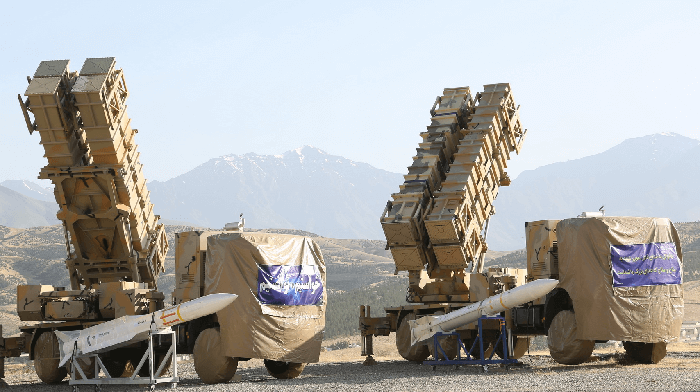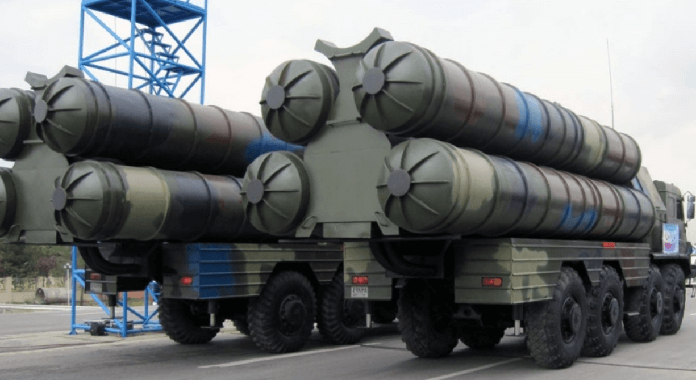Iran possesses a reliably extensive air defence network, bolstered in part by the indigenously produced missile systems and through imports from Russia and China. According to the USA’s Department of Defence, the country’s missile forces are the largest in the Middle-East.
The expansion of #Iran's missile capabilities is based on a precise, rational basis. pic.twitter.com/FBI4Hfw3pC
— Khamenei TV (@Khamenei_tv) October 20, 2020
The leading US-based think tank, Centre for Strategic and International Studies, says Iran has thousands of missiles of more than a dozen different types. Last year, Iran’s elite Revolutionary Guards shot down the Global Hawk, an advanced US navy surveillance drone, flying at high altitude, with a ground-to-air missile.
What Would Change For India, China If Biden Beats Trump As The Next US President?
In 2019, Iran unveiled its indigenously developed Bavar-373 long-range air defence system, whose capabilities are claimed to be on par or better than those of the Russian S-300 or the US Patriot. The country also possesses the road-mobile radar-guided S-300 air defence system, procured through a 2015 deal with Russia.
READ: Japanese Air Force ‘Shoots-Down’ Unmanned Fighter Aircraft Idea; Accelerates Work On 6th-Gen Jet
If a report from the Military Balance, an annual publication by the International Institute for Strategic Studies (IISS), is to be believed, the country has 32 batteries of Russian-made S-300 ground-to-air missiles that have been delivered by Moscow since 2016.
#Iran’s new Haj Qassem (Soleimani) Ballistic Missile with the range of 1400km and the Abu Mahdi (Muhandis) Cruise missile with the range of 1000km. pic.twitter.com/srCZyIghdT
— Aurora Intel (@AuroraIntel) August 20, 2020
The S-300 at one time used to be Russia’s premier air defence system, which was then succeeded by the highly advanced S-400. S-300 can engage up to 36 aircraft simultaneously up to 120 miles away using a mix of long-and medium-range missiles.
The shooting down of a sophisticated US drone by an Iranian missile, believed to be a Sayyad-2C from Khordad-15 anti-aircraft system, demonstrated the threat Tehran’s air defence capabilities could pose to the US air superiority.
However, the Global Hawk is a bulky unmanned aircraft with no stealth capabilities, which means it has a limited chance of dodging a missile, even from fairly older air defence systems.

With all these capabilities, Iran poses a significant challenge to the modern US F-22s, B-2 Bombers and even F-35s even though US jets and Russian-origin S-300s have never come face-to-face, officially.
Acquisition of S-400s
However, that may soon change if Russia goes ahead with the sale of S-400 to Iran, which has been rumoured to take place for quite some time.
Recently, the Russian ambassador to Iran reportedly said the country will have no problem selling Tehran an advanced air defence system when the UN arms embargo on the Islamic Republic expires.
Levan Dzhagaryan, while speaking to a local newspaper in Iran, brushed off the threat of US sanctions and said Russia was willing to consider any weapon requests from the Islamic republic.

“As you know we have provided Iran with S-300. Russia does not have any problem to deliver S-400 to Iran and it did not have any problem before either,” the Times of Israel quoted the ambassador as saying.
That could change the whole game in the Middle-East for the US-led allies, particularly Israel, posing a formidable challenge to their assets in the region. The new S-400 variants reportedly use a new generation of digital processors, computer networking and radar-frequency detection.
Watch: The ‘Sleepy Monster’ Russian Anti Ship Missile System That Guards The Crimean Peninsula
These along with new upgrades on the older version are reported to be a credible threat to the 5th-Gen stealth fighters and B-2 bombers. The upgraded S-400s, and of course S-500s, could be a reliable deterrent to a vast range of US aircraft.
According to an assessment by the National Interest, the real danger with upgraded S-400s likely pertains to computer processing speeds the extent to which they are networked to one another.
If an ability to maintain a “track” on an aircraft improves at higher speeds over greater ranges due to an ability to more quickly integrate and network information than planes could be more vulnerable even if the hardware or munitions themselves have not changed much.
‘For instance, its high-speed data link technology improves the ability for one air-defence location to find and share details with another ‘node’ within a broader system, then broader areas could become vulnerable and the normal radar-evading advantage of flying at high-speeds could be minimised,’ it adds.
Moreover, the acquisition of such a highly advanced air defence system would mean serious challenges for Israeli air operations in the region. And the move could ensure a sustained deterrence for Iran due to the system’s reportedly reliable and demonstrated capabilities and reduce the potential of any military misadventures from the US over Iran’s assets.




